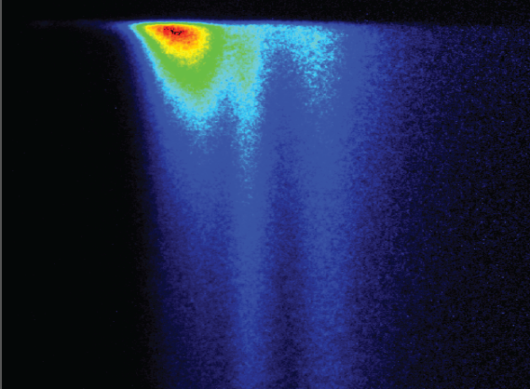Cyanobacteria can efficiently harvest sunlight with smart antenna

Cyanobacteria have an interesting trick to harvest sunlight during light fluctuations. In darkness, the cells prepare for a subsequent increase in light intensity by adopting a larger light-harvesting antenna. Researchers of Wageningen University and the University of Turku, Finland describe the mechanism in a study that appeared online in Nature's Scientific Reports.
Cyanobacteria are ancient single-celled aquatic organisms, also known as blue-green algae: their blue color arises from their big light-harvesting pigment-protein complexes. These complexes contain blue pigments that are most sensitive to orange-green light, which can penetrate deeply into the water. Cyanobacteria contribute substantially to the global fixation of carbon dioxide, and knowledge about their photosynthetic strategies may contribute to original solutions for energy sustainability.
Regulatory mechanisms
The aquatic environment poses various challenges to the photosynthetic apparatus. In the upper water layers, one of the main challenges is the fluctuating incident light intensity. Waves and currents cause scattering of the light in waters and, in particular, suddenly increased light intensities can cause imbalances in the photosynthetic apparatus. It is well-known that the cells therefore have regulatory mechanisms to rapidly modulate the amount of absorbed light by rearranging the light-harvesting machinery.
Natural light conditions
Due to the complexity of the photo-regulatory mechanisms, most of the research makes use of highly specific, well-defined artificial conditions, such as single-wavelength light and the presence of chemicals to regulate the energy flow. The new study uses 'natural' light conditions: a dark-to-light scheme typical of what the organisms experience when external factors move them between these regimes in the sea.

Antenna
In darkness, the cells accumulate many electrons due to respiratory processes. These electrons can be re-used for the creation of energy-rich species during photosynthesis. The study shows that in darkness, the cells seem to "get ready" for an increase in light intensity by adopting a larger light-harvesting antenna. In this way, during the first seconds after the light appears, they can immediately utilize the electron pool very efficiently to re-create energy-rich molecules.
More information: Volha Chukhutsina et al. Cyanobacterial Light-Harvesting Phycobilisomes Uncouple From Photosystem I During Dark-To-Light Transitions, Scientific Reports (2015). DOI: 10.1038/srep14193
Journal information: Scientific Reports
Provided by Wageningen University



















